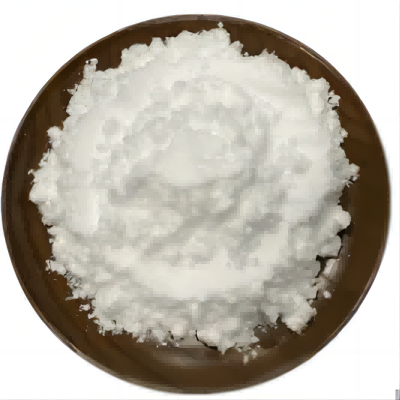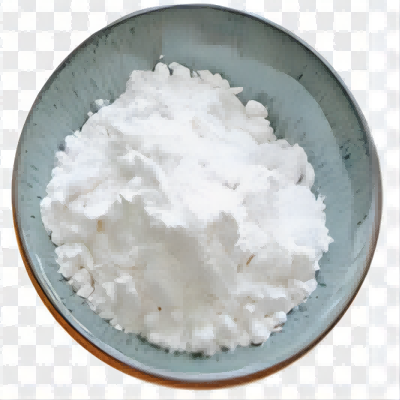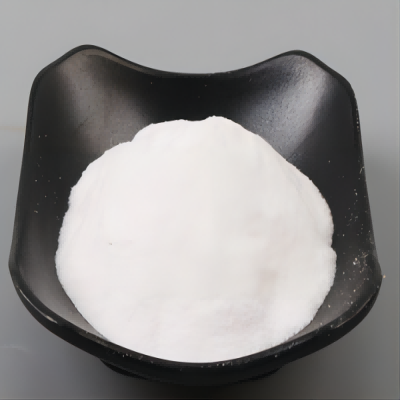-

Serine CAS:56-45-1 Manufacturer Supplier
Serine is an amino acid essential for the synthesis of phosphatidylserine, which is a component of the membrane of brain cells (i.e., neurons). It can be produced in the body, including the brain, but an external supply from the diet is essential in maintaining necessary levels. Although preclinical studies suggest L-serine may inhibit inflammation in the brain, levels of L-serine in humans do not appear to be associated with dementia or cognitive decline. Because L-serine is a naturally occurring amino acid, supplementation is likely safe in moderation.
-

N-Acetyl-L-Proline CAS:68-95-1 Manufacturer Supplier
N-acetyl-L-proline is a N-acetyl-L-amino acid, a N-acylpyrrolidine, a pyrrolidinemonocarboxylic acid and a L-proline derivative.N-Acetyl-L-proline are important fine organic chemical intermediates, which are widely used in medicine, pesticide, chemical industry and other fields.
-

Alpha-Ketoisocaproic acid CAS:816-66-0 Manufacturer Supplier
Alpha-Ketoisocaproic acid that is pentanoic acid (valeric acid) substituted with a keto group at C-2 and a methyl group at C-4. A metabolite that has been found to accumulate in maple syrup urine disease.
-

Tartaric Acid CAS:87-69-4 Manufacturer Supplier
Tartaric acid occurs as colorless monoclinic crystals, or a white or almost white crystalline powder. It is odorless, with an extremely tart taste. L-(+)-Tartaric Acid is a naturally occurring chemical compound found in berries, grapes and various wines. It provides antioxidant properties and contributes to the sour taste within these products.
-

N-Acetyl-L-Methionine CAS:65-82-7 Manufacturer Supplier
L-methionine derivative that is L-methionine in which one of the amine hydrogens is substituted by an acetyl group.N-Acetyl-L-Methionine is one of the body’s essential amino acids, the lack of which can cause liver and kidney disorders.Especially important for protecting liver function. Can promote hair, nail growth, and have detoxification and enhance muscle activity.
-

Alpha-Ketoglutaric Acid CAS:328-50-7 Manufacturer Supplier
Alpha-Ketoglutaric Acid also known as α-Ketoglutaric acid (AKG) is a chemical found in the body. It is a ketone derivative of the organic compound glutaric acid. It is important for the proper metabolism of all essential amino acids and the transfer of cellular energy in the citric acid or Krebs cycle. In combination with L-glutamate, AKG can reduce levels of ammonia formed in the brain, muscles, and kidneys, as well as help balance the body’s nitrogen chemistry and prevent nitrogen excess in body tissues and fluids.
-

Norvaline CAS:6600-40-4 Manufacturer Supplier
L-Norvaline, an amino acid nutritional supplements, is a nonessential amino acid that’s typically found in protein-rich foods, such as meat and eggs. And, it can also be made by the body from valine during normal metabolism. L-norvaline is frequently consumed by athletes as part of their workout supplement program. It is usually used for pre-workout drinks to boost energy and support post-workout recovery. During workouts, L-norvaline improves muscle tissue strength and endurance by providing massive amounts of oxygen and nutrients.
-

Ornithine HCL CAS:3184-13-2 Manufacturer Supplier
L(+)-Ornithine hydrochloride is a non-essential amino acid. It is manufactured in the body utilizing L-Arginine which is an important precursor needed to manufacture Citrulline, Proline and Glutamic Acid.L-Ornithine is one of the products of the action of the enzyme arginase on L-arginine, creating urea. Therefore, ornithine is a central part of the urea cycle, which allows for the disposal of excess nitrogen. Ornithine is recycled and, in a manner, is a catalyst. First, ammonia is converted into carbamoyl phosphate (phosphate-CONH2), which creates one half of urea.
-

Phenylalanine CAS:63-91-2 Manufacturer Supplier
Phenylalanie is an essential amino acid and it is the precursor of the amino acid tyrosine. The body cannot make phenylalanie but it needs phenylalanie to produce proteins. Thus, human needs to obtain phenylalanie from food. 3 forms of phenylalanie are found in the nature: D-phenylalanine, L-phenylalanine, and DL-phenylalanine. Among these three forms, L-phenylalanine is the natural form found in most foods that containing proteins, including beef, poultry, pork, fish, milk, yogurt, eggs, cheeses, soy products, and certain nuts and seeds.
-

Phenylglycine CAS:2935-35-5 Manufacturer Supplier
Phenylglycine is an amide that belongs to the group of pyridoxal phosphate analogues. It has been shown to be a response element for enzymes and natural compounds in Escherichia coli and Saccharomyces cerevisiae. It inhibits aminotransferase activity, dopamine synthesis, and microbial metabolism in these organisms. This compound also has a structural analysis that includes x-ray diffraction data, which can be used to identify its three-dimensional structure.
-

Proline CAS:344-25-2 Manufacturer Supplier
L-proline is one of the 20 amino acids that are used to synthesize proteins by the human body. Functions of proline include helping form collagen, regenerating cartilage, forming connective tissue, repairing skin damage and wounds, healing the gut lining, and repairing joints.D-proline is the D-enantiomer of proline. It has a role as a mouse metabolite. It is a D-alpha-amino acid and a proline. It is a conjugate base of a D-prolinium. It is a conjugate acid of a D-prolinate. It is an enantiomer of a L-proline. It is a tautomer of a D-proline zwitterion.
-

Pyroglutamic Acid CAS:98-79-3 Manufacturer Supplier
Pyroglutamic acid is an amino acid that occurs naturally in the body. It is present in the brain, spinal fluid, skin and blood.pyroglutamic acid is one of the major components of natural moisturizing factor of the skin, its moisturizing ability is far stronger than glycerin and propylene glycol.

